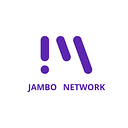Jambo Network brings the Web 2.0 advertising industry into the Web 3.0 era (1)
The Internet continues to be upgraded, from web 1.0, which only had static web pages, to web2.0, where users directly interact with webpages, to web 3.0 where users independently control data. After more than ten years of development, web2.0 has drastically improved. But now Web3.0 is on the rise. It uses blockchain and cryptocurrency as an important basis to guide the Internet toward personal control of data and privacy.
In his book “Token Economy”, Shermin Voshmgir stated that Web3.0 can change the data structure of the Internet backend and introduce a general state layer to motivate network participants through tokens. Web3.0 will completely change the way value is exchanged online. In the current state of development, Jambo Network expands the blockchain network with ADX function based on the Polkadot Substract framework. It provides valuable development experience for areas in which the expansion of Web3.0 is difficult.
First, let us take a look at the history of the development of the Web.
Web 1.0
After People started to own computers, some started connecting these to each other thereby creating the Internet. These connections were facilitated by the establishment of data transfer protocols.
With these protocols data could be transmitted through the TCP/IP protocol, where data can be send directly form one user to another. Over the last few decades, the data transmission speed has made leaps while the cost of information exchange has decreased.
This development created the Web 2.0
Web 2.0
The web 2.0 era describes the phase after the internet matured and became easily accessible for everybody.
The concept of Web 2.0 was proposed by publisher operator O’Reilly and MediaLive International in 2004.
The focus in the Web2.0 is user interaction. Users are not only the viewers of website content, but also the producers of content. The model of the Internet has evolved from simple “reading” to “writing” and “co-construction”. Web 2.0 has allowed people to develop from passively receiving information to actively creating things online. Web2.0 has completely changed people’s social interaction, through social media and e-commerce platforms, and bringing the producers and consumers of information, goods and services closer together.
Demands and Challenges for the Web3.0
But while the Web 2.0 become more personalized and engaging for users it has also brought a centralization of the Internet that has reached alarming levels — almost all online services are hosted on hardware owned by the “big three” cloud providers, mainly Amazon Web Services, Microsoft Azure and search giant Google. Facebook has 2.23 billion users worldwide, accounting for more than two-thirds of the global 3.2 billion active Internet users.
Although Internet centralization can provide users with faster, more reliable, and feature-rich services, it also has many shortcomings. Centralized platforms are extremely vulnerable to security breaches and data leaks- in early October 2018, Facebook was hacked, exposing the personal details of more than 50 million users.
Modern Internet users rely on a single corporate service provider to access the services they use every day, and there is no guarantee that the platforms they use will not leak their data or misuse it in other ways.
Jambo Network will use the Polkadot ecosystem to solve the problem of a lack of scalability in Ethereum and provide a technical solution for the Web 3.0.
Instead of the Web 2.0 traditional Internet advertising system, Jambo Parachain uses a trusted (phisher) terminal DAPP (Collector) to collect data and use the in-chain decentralized matching engine ADX (verifier) to access the Polkadot relay chain and ensure that the advertising data (content, placement, audience, effect, etc.) is true, transparent and safe.
For ordinary users, the Internet services based on Web3.0 will not change much on the surface. This is because Web2.0 was a front-end revolution, which has changed the interface between us and the Internet, for example by shifting from PC applications to mobile applications.
Web3.0 will be a back-end revolution. Blockchain technology will redefine the connections of the Internet backend and completely change the data storage and management method of the Internet. Currently, Web 3.0 is still in its infancy. But just like Web2.0 one day it will be everywhere, and we are looking forward to it.
